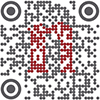"The second X chromosome helps women stave off cognitive decline."
Views expressed in this science and technology update are those of the reporters and correspondents. Accessed on 06 March 2025, 2228 UTC.
Content and Source: https://www.nature.com.
Please check link or scroll down to read your selections. Thanks for joining us today.
Russ Roberts (https://hawaiisciencejournal.blogspot.com).
| |||||
| |||||
Hello Nature readers, | |||||
 | |||||
| Women usually have two X chromosomes (shown here in an artist’s rendering), and one of them is inactivated early in development. (Cavallini James/BSIP/Alamy) | |||||
The second X chromosome does make noiseThe second X chromosome in female cells — previously thought to be ‘silent’ — might explain why women tend to live longer and be more resilient to cognitive decline than men. In mice, researchers found that ageing activates expression of the ‘silent’ X chromosome in cells in the hippocampus, a brain region crucial to learning and memory. When they boosted the expression of one of these genes in mature mice of both sexes, it improved the mice’s cognition, as measured by how well they explored a maze. Nature | 5 min readReference: Science Advances paper | |||||
Humans and bone tools go way backBone tools discovered in Tanzania reveal that ancient humans consistently used such tools at least one million years earlier than we thought. The previous estimate put the earliest use of bone tools at around 400,000 years ago. The new findings smash that record, dating the implements to around 1.5 million years ago. The utensils were crafted from elephant, hippopotamus and bovine bones, and were probably used for tasks such as butchering and digging out tubers, says palaeoanthropologist Jackson Njau. Nature | 4 min readReference: Nature paper | |||||
How the brain knows when to give upIn mice, the activity of three types of neurons is involved in the decision to persist with a task, explore new options, or give up. Researchers genetically engineered the neurons — which release the neurotransmitters GABA, glutamate and serotonin — so they could be switched on and off with light and placed the mice in a box with 20 unfamiliar objects. If researchers suppressed GABA-releasing neurons, the mice spent more time investigating one object. Turning off glutamate-related neurons made the mice shop around between objects more often, and if serotonin-producing neurons were inhibited, the mice lost interest altogether. Nature | 5 min readReference: Nature paper | |||||
AI can act as star-collision oracleA machine-learning algorithm could alert researchers to the impending collision of two neutron stars, which would allow researchers to observe the crash in real time. The algorithm was trained on simulations of the data that a gravitational-wave observatory collects in the minutes before a rarely observed event called a kilonova — a merger of two neutron stars. The algorithm would enable observatories to tell astronomers that a collision is about to happen at a given time and location in the sky, with 30% more accuracy than existing rapid-response techniques. Nature | 4 min readReference: Nature paper | |||||
| |||||
| |||||
| |||||
| |||||
 | |||||
| Areas of deforestation in Amazonia affect rainfall patterns in both wet and dry seasons. In wet seasons heat from patches of cleared land pushes air upward to create an area of low pressure (top). This draws moisture from neighbouring areas, increasing rainfall over the cleared land and reducing it elsewhere. During a dry season, less moisture enters the atmosphere, which reduces rainfall over a wide region (bottom). (Nature News & Views | 7 min read) Reference: Nature paper | |||||
| |||||
| |||||
You received this newsletter because you subscribed with the email address: kh6jrm@gmail.com Please add briefing@nature.com to your address book. Enjoying this newsletter? You can use this form to recommend it to a friend or colleague — thank you! Had enough? To unsubscribe from this Briefing, but keep receiving your other Nature Briefing newsletters, please update your subscription preferences. To stop all Nature Briefing emails forever, click here to remove your personal data from our system. Fancy a bit of a read? View our privacy policy. Forwarded by a friend? Get the Briefing straight to your inbox: subscribe for free. Want to master time management, protect your mental health and brush up on your skills? Sign up for our free short e-mail series for working scientists, Back to the lab. Get more from Nature: Register for free on nature.com to sign up for other newsletters specific to your field and email alerts from Nature Portfolio journals. Would you like to read the Briefing in other languages? 关注Nature Portfolio官方微信订阅号,每周二为您推送Nature Briefing精选中文内容——自然每周简报。 Nature Portfolio | The Springer Nature Campus, 4 Crinan Street, London, N1 9XW, United Kingdom Nature Portfolio, part of Springer Nature. |



Comments
Post a Comment
Welcome to "Hawaii Science Journal". Here you'll find the latest stories from science, technology, medicine, and the environment.